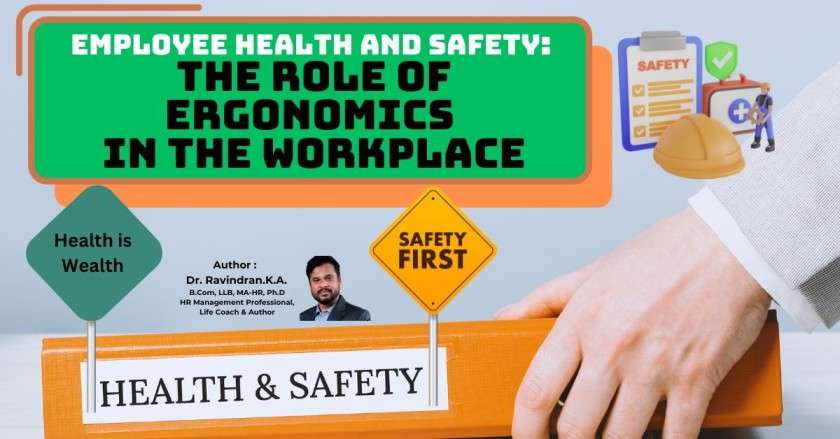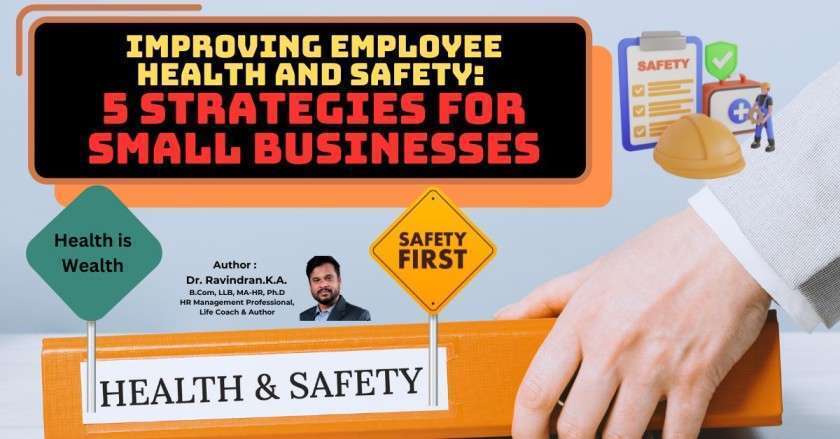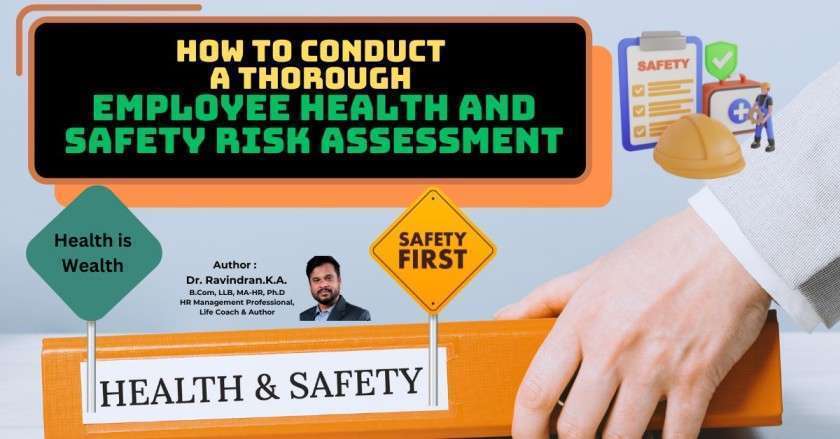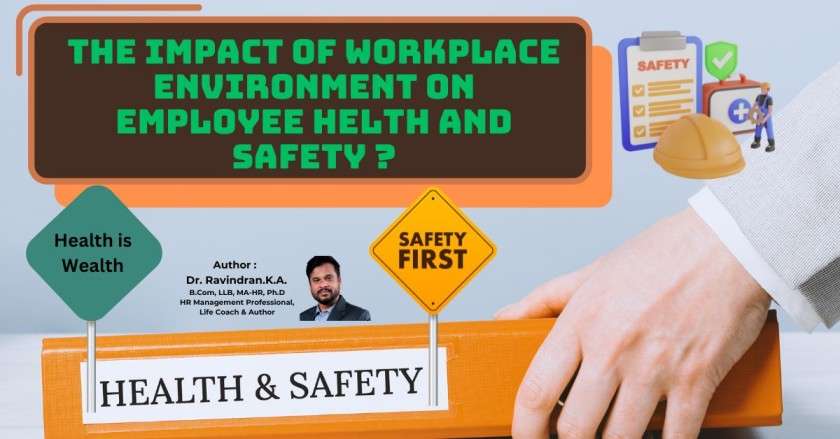Employee Health and Safety: Common Workplace Hazards and How to Avoid Them
Do you, as an employer, put in your best effort to keep your team safe at work? Safety at work is super important. It stops your workers from getting hurt and keeps them happy. Plus, a safe workplace means your business runs well and with less trouble with the law. By knowing the dangers and how to deal with them, you make sure your place is safe and everyone is working right.
Thank you for reading this post, don't forget to subscribe!Key Takeaways – Employee Health and Safety
- Workplace safety is essential to protect employees and your business from the consequences of accidents and injuries.
- Employers must identify and assess potential hazards, and implement strategies to manage and prevent them.
- Providing adequate safety training, conducting regular audits, and establishing safety policies are crucial steps.
- Prioritizing workplace safety can create a healthy, productive, and compliant work environment.
- Understanding and addressing common hazards, such as falls, electrical risks, and chemical exposures, is key to preventing accidents.
Understanding Workplace Hazards
Finding things that could be dangerous in the workplace is the first step to making it safe. It means looking closely at physical, chemical, and biological dangers that could hurt people. OSHA lists six big risks at work: safety, biology, chemicals, how the work is set up, how we sit or move, and physical stuff in the place.
Identifying Potential Risks
There are many safety issues like slippery floors or working up high. There’s also equipment that’s not covered, dangers from electricity, tight spaces, and machinery risks. People might face biology dangers from blood, germs, viruses, and animal waste. Chemical risks can be things we breathe in or get on our skin, like cleaning stuff, welding smoke, gas, and poisons. If your desk isn’t set up right, or you lift a lot, or your job makes you sit or move wrong, that can hurt too.
There are also problems from how work is organized, like too much to do, violence, disrespect, not enough say on the job, or feeling bullied. Then, there are physical dangers that might come from the sun, radiation, very hot or cold places, or loud noises all the time.
Importance of Employee Health and Safety Training
Training everyone well about health and safety is very important. It helps people see, avoid, and handle dangers at work. Companies can make work safer by setting clear safety rules, regularly checking for dangers, and making sure everyone knows how to be safe. Before starting each workday, it’s important to look for any new dangers, check new equipment or job steps, and look over the place for risks. Doing this helps keep people from getting hurt, knows the rules, saves money, makes everyone feel more involved, and makes the business work better.
Legal Obligations and Compliance
Employers also must follow laws to keep work safe. This means doing what OSHA says to protect people. The ILO has written the OSH 2001 rules for how to run safety programs and it’s the boss’s job to make sure everyone follows the safety laws.
A company’s safety policy must be clear, shared with everyone, and talk about keeping people healthy and safe, plus following laws, letting workers help, and getting better all the time. It’s really important for everyone to be part of making work safe, no matter their job. The boss has to make sure everyone knows how to keep things safe and trains them to do so. Teaching about safety should include everyone, be done by experts, and keep records that show what’s been taught and learned.
Physical Hazards and Prevention Strategies
Keeping workplaces safe is crucial. Physical hazards like slipping, falling, and loud noises can harm workers. These dangers, if not handled well, can cause injuries or worse.
Slips, Trips, and Falls
Slipping, tripping, and falling are major risks at work. They often happen on wet floors or in cluttered areas. Employers need to ensure floors are clean and not slippery, pathways are clear, and signs signal danger.
Falling Objects
Objects falling from heights, like tools, threaten workers’ safety. To reduce this risk, it’s important to store heavy items properly. Employers should also give out safety gear, including hard hats, to protect against falling objects.
Loud Noises and Hearing Protection
Working around loud noises can damage hearing over time. Employers should maintain optimal lighting for safety, which is usually between 100 and 200 lumens. They must also give employees protective gear like earplugs or noise-canceling headphones to avoid hearing injuries.
Ergonomic Risks and Solutions
Bad ergonomics, like sitting too long or poor work setups, can cause health issues. Providing adjustable work setups and chairs can help. Taking breaks often is also essential. This keeps employees healthy and productive.
| Physical Hazard | Potential Consequences | Prevention Strategies |
|---|---|---|
| Slips, Trips, and Falls | Serious injuries, including broken bones, head trauma, and spinal cord damage | Keep walkways and floors clean and dry, use non-slip surfaces, provide proper signage |
| Falling Objects | Concussions, fractures, and even fatalities | Ensure proper storage and handling of heavy or bulky items, provide hard hats and other PPE |
| Loud Noises | Hearing damage and loss | Maintain adequate lighting, provide earplugs or noise-cancelling headphones |
| Ergonomic Issues | Musculoskeletal disorders, chronic pain, fatigue | Implement adjustable workstations, provide ergonomic chairs, and schedule regular breaks |
By tackling these physical hazards head-on and enacting solid preventative measures, workplaces can be safer and more efficient.
Chemical and Biological Hazards
At work, there are dangers to health from chemicals and germs. Employers need to find and handle these risks to keep workers safe.
Handling Hazardous Substances
Work chemicals can hurt us fast or slowly, making us sick or irritating our skin or breath. They include poisons, cleaning stuff, and bug killers. A way to stop getting sick is by using the right gear and checking the air. Also, keeping these things well-tagged and stored right. Always follow the law on how to use chemicals.
Personal Protective Equipment (PPE)
Wearing the right protective gear against chemicals and germs is key. Employers check what might harm workers’ lungs and teach them how to use protection. If the air isn’t safe, they must provide devices like gloves and masks for safety. These items keep dangerous stuff away from us or stop it from spreading.
Bloodborne Pathogens and Infection Control
Germs from various sources at work can be dangerous. Ways to stay safe include learning about it, using the right tools to clean up, and having special places for sharp waste. If the job means a higher risk, getting shots for some diseases might be needed.
Following strict safety rules, checking all risks, and making sure everyone meets standards can make work places safer from chemical and germ dangers.
Employee health and safety compliance
Keeping employee health and safety compliance first is key for Indian employers. They ensure safety by using safety protocols and doing risk assessments. They also follow OSHA compliance and other rules. This makes work safer, cuts down on accidents, and avoids legal troubles and fines.
Implementing Safety Protocols
Employers must create a safe place that doesn’t harm their workers. For this, the Indian Occupational Safety, Health, and Working Conditions Code, 2020 (OSH Code) guides them to set up strong safety protocols. They can do this by giving out personal protective gear, holding safety courses, and promoting a safety-minded culture. This helps lessen the chance of accidents at work.
Conducting Risk Assessments
Doing risk assessments regularly is vital in employee health and safety compliance. It means employers look for and deal with dangers in the workplace upfront. A well-done risk check helps set up safety plans that make work safer and more efficient.
Regulatory Compliance and OSHA Standards
Abiding by OSHA compliance and other regulatory standards keeps the workplace safe. In India, if there’s an accident, the Workmen’s Compensation Act of 1923 covers the employer. The OSH Code also says certain workers must get free health tests every year. Keeping track of safety laws helps show that workers’ well-being is a top concern. It also cuts the chance of getting in trouble legally or having a bad public image.
Conclusion
Employers must take safety at work seriously. Injuries or accidents are bad for workers and the company. They should know the dangers employees face, like getting hurt by things, chemicals, or illnesses. By stopping these dangers and making a safe place to work, everyone wins.
Keeping workers safe is crucial to avoid big problems. This means checking risks often, setting up clear safety rules, and following safety laws like those from OSHA. This way, companies stay out of trouble and protect their people.
Even if money is tight, small businesses can improve safety and win big. Doing this makes workers happier, works better, and calls in sick less. By really caring about safety, companies set themselves up to do well over time.
FAQ
What are the common workplace hazards that employers need to be aware of?
Employers must know about three types of workplace dangers. These are physical (like slipping or loud noises), chemical (such as toxic substances), and biological hazards (including bloodborne pathogens).
Why is it important for employers to provide comprehensive employee health and safety training?
It’s key for employers to give thorough health and safety training. This helps workers spot and reduce risks at work. Such training lets employees find and report dangers, wear protective gear right, and follow safety rules. This makes work safer for everyone.
What are the legal obligations for employers regarding workplace safety?
Employers legally must follow workplace safety rules like those from OSHA. They need to do risk checks, set up good safety steps, and train workers to avoid accidents. This is to keep their work a safe place.
How can employers prevent physical hazards in the workplace?
For stopping physical dangers, bosses should ensure clean and debris-free walkways. They should use non-slip surfaces, store heavy stuff safely, and give out the right protective gear. Regular checks on machines are also a must.
What steps should employers take to address chemical and biological hazards?
To handle chemical and biological dangers, bosses should supply right protective gear. They need to use chemicals in places with fresh air, label and store them safely, and check the working environment often. Following all laws about harmful substances is also crucial.
How can employers ensure employee health and safety compliance?
Making sure workers stick to safety rules means having solid protocols in place, and often checking for risks. It also means following laws like OSHA. These actions help keep the workplace safe.
 hroptimum
hroptimum



